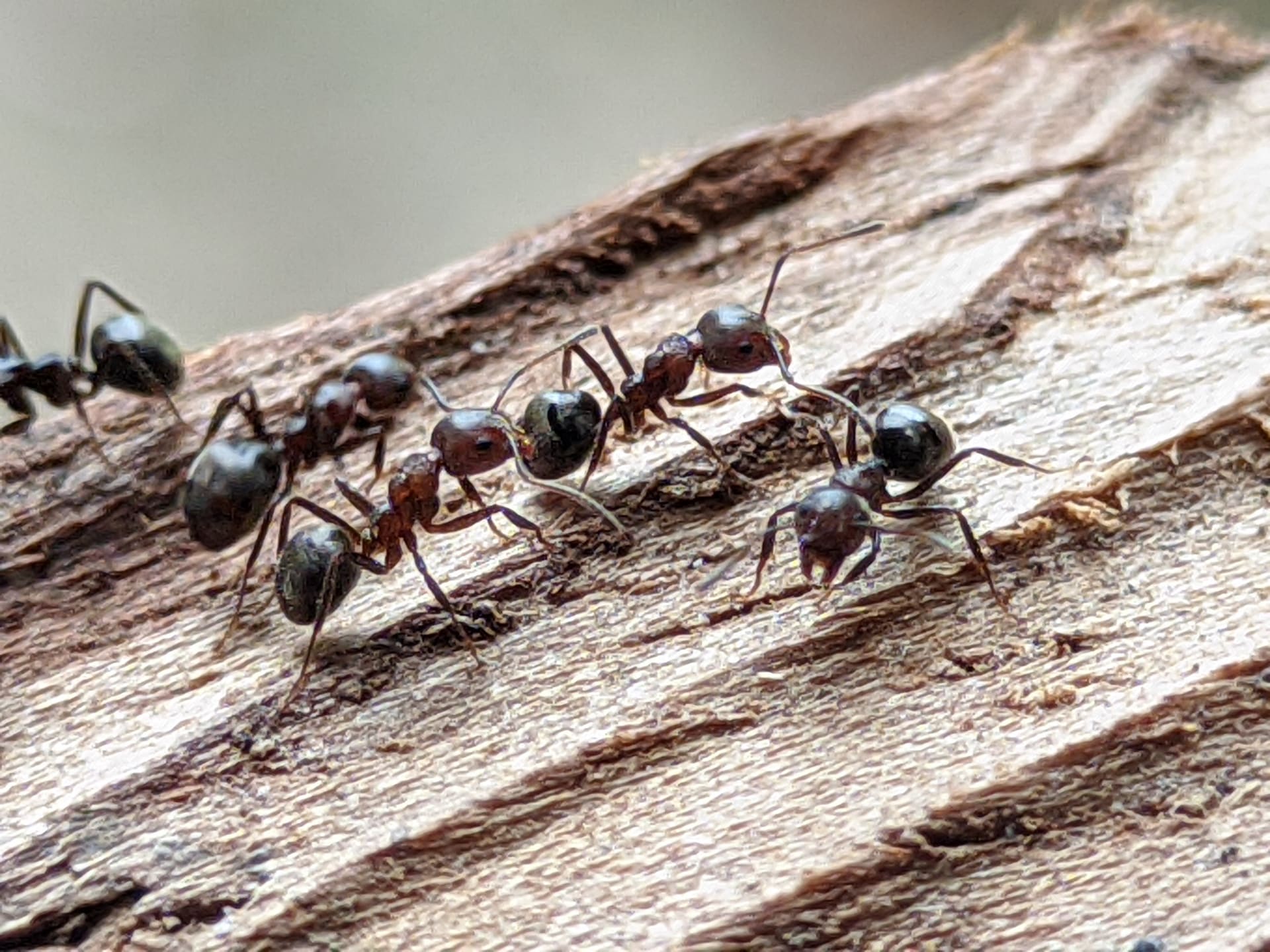Carpenter ants are one of the most common structural pests in Michigan, especially during the state’s humid summer months. As the temperature rises and moisture levels climb, these wood-loving insects become more active, seeking damp environments to nest in and food to forage. While they don’t consume wood like termites, their tunneling behavior can silently cause serious structural problems if left unchecked. Understanding what draws carpenter ants to Michigan homes during summer and how to stop them effectively is essential for any homeowner looking to protect their property.
How Humidity Fuels Carpenter Ant Activity
Carpenter ants are drawn to moisture. High humidity during Michigan summers creates an ideal environment for them to thrive, particularly in homes with soft, damp, or decaying wood. Unlike drywood termites that target hard, dry timber, carpenter ants prefer wood that has been softened by water damage, making areas near leaks, gutters, and poorly ventilated spaces high-risk zones.
Here’s why Michigan’s summers make homes vulnerable:
- Increased Rainfall: Afternoon storms and high humidity levels saturate outdoor wood and soil, encouraging ants to nest nearby.
- Warm Nights: Nighttime warmth promotes nocturnal foraging activity, making it easier for ants to find food sources indoors.
- Shady, Damp Conditions: Shaded areas around foundations and decks stay moist longer, drawing ants to build satellite colonies close to structures.
Humidity doesn’t just make your home uncomfortable, but also transforms it into an inviting habitat for one of Michigan’s most persistent pests.
Signs You May Have a Carpenter Ant Problem
Carpenter ant activity often goes unnoticed until damage is extensive. These pests are quiet invaders, nesting within walls, beams, and crawlspaces. But there are early signs that can help you catch the problem before it worsens.
Look out for the following indicators:
- Large Black Ants Indoors: Winged or wingless ants in kitchens, bathrooms, or basements are often scout ants searching for food.
- Sawdust Piles (Frass): Ants excavate wood, leaving behind frass: a fine sawdust-like material found near wall voids or baseboards.
- Tapping or Rustling Sounds: In quiet moments, you may hear faint noises coming from behind walls where ants are actively tunneling.
- Hollow-Sounding Wood: When tapped, infested wood may produce a different tone due to internal damage.
- Swarmers Near Windows: Reproductive ants with wings will gather near light sources, especially in late spring or early summer.
If left untreated, their damage can escalate quickly. For a deeper look at how extensive it can become, you can learn more about what carpenter ants can damage.
Moisture Control: Your First Line of Defense
Since carpenter ants are moisture-dependent, managing damp areas is critical to prevention. Reducing humidity in and around your home cuts off the conditions they rely on for nesting.
Focus on these key actions:
- Fix Leaks Quickly: Repair leaky roofs, faucets, and plumbing to prevent water damage.
- Improve Ventilation: Use exhaust fans in bathrooms, kitchens, and basements to reduce interior humidity.
- Clean Gutters Regularly: Blocked gutters can cause roof leaks and siding rot, both attractive to carpenter ants.
- Trim Vegetation: Keep tree branches and shrubs from touching your home to limit pathways for ants.
- Inspect Wood Structures: Decks, window sills, and fence posts should be checked often for water damage.
By eliminating access to damp or decaying wood, you greatly reduce the chance of carpenter ants establishing colonies in your home.
Why DIY Approaches Fall Short
At first glance, treating carpenter ants might seem straightforward. Many homeowners attempt sprays, traps, or store-bought bait systems, hoping to solve the problem. However, most DIY efforts target only the worker ants and leave the colony, or worse, the queen, untouched. These methods often provide only temporary relief, allowing the colony to regroup and reappear later.
Carpenter ants are known to build multiple nests, including satellite colonies, making it difficult to eradicate them fully without understanding their behavior and foraging patterns. In most cases, surface-level treatments miss hidden entry points or deep wall infestations.
This is why most DIY efforts fail, leading to recurring problems and mounting damage. A targeted, expert-led strategy is often necessary to eliminate both the insects and their habitat for good.
When to Seek Professional Help
If you’ve spotted consistent ant activity, frass, or signs of structural weakening, it’s time to bring in an expert. Carpenter ant infestations are often more widespread than they appear and can remain hidden behind walls for months or even years. Trained professionals not only locate and eliminate the colony but also identify the source of moisture and advise on long-term prevention.
An inspection can reveal other pest vulnerabilities as well, especially in older homes or properties with landscape drainage issues. Investing in professional treatment early prevents greater damage and cost later and provides peace of mind that your home is protected from future invasions.
Protect Your Home Before Damage Spreads
Carpenter ants thrive in Michigan’s summer humidity, but your home doesn’t have to be their next target. Contact Prevent Pests for expert guidance and solutions designed to stop the damage before it starts.


